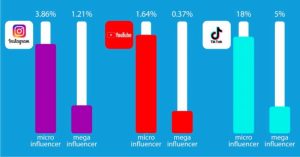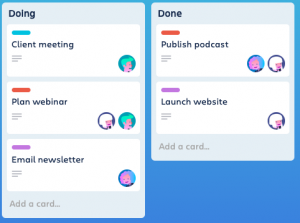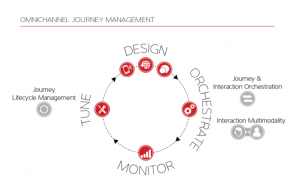With marketing innovation happening at a meteoric pace, how do you keep up? Columnist Lewis Gersh has some tips on how to spot the latest trends and stay ahead of the curve.
 The ability to spot an opening to transform an industry and innovate ahead of the pack is a technology entrepreneur’s best asset. But technological advances pay a heavy toll in the form of disruption.
The ability to spot an opening to transform an industry and innovate ahead of the pack is a technology entrepreneur’s best asset. But technological advances pay a heavy toll in the form of disruption.
The rate at which an innovation loses its competitive advantage accelerates every year. This is what I call the “velocity of obsolescence.”
Although a product may be considered “hot” now, it can easily lose its value. While the rate of innovation is increasing, the velocity of obsolescence is growing even faster.
In 2013, I wrote about this concept with a focus on the more visible aspects of technology — the devices and platforms that consumers and business people interact with every day. Now that I’m focused on the needs of the marketer, I tested the theory against marketing technologies. Here’s what I found.
The ’90s: The dawn of marketing innovation
In the mid- to late ’90s, the first wave of digital marketing was born, and with it came the tedious manual process of managing media inventory and pulling accurate reports. Publishers were unable to determine how much ad inventory was available or to gauge the value of each placement to a marketer. Insertion orders were faxed, and banners were hard-coded into fixed placements on web pages.
Back then, tech startups required millions in investment money and two years of effort to get off the ground with what we now refer to as “minimum viable product,” making it easy for newcomers to leapfrog work in progress. The dominant technologies of this era were familiar concepts like bid-based ad servers (DoubleClick), search ad platforms (Overture and Google AdWords) and countless other attempts that have become distant memories.
At the time, marketers viewed the dollars they spent on digital marketing as experiments; publishers and agencies had to invest time and money to work with the platforms they thought would survive. Obsolescence, forced by the drawbacks of a nascent market, occurred.
But in hindsight, the pace of innovation remained slow, limiting the velocity of obsolescence in marketing platforms. Once dominant platform status was achieved, it was carried on for some time.
The double-dip recessions: the marketing innovation rollercoaster
From the depths of the dot-com bust in 2000, marketers expected the surviving marketing systems to reach enterprise-class scalability. As the platforms rose (Google and Atlas, now owned by Facebook), a slew of innovations came in the form of ad types.
Rich media, social media and display ads blossomed. Email servers and service providers grew in capabilities.
Brands and their agencies were pitched on publishers and ad tech platforms incessantly. “Shiny-new-object syndrome” went from a bleeding-edge concept to an epidemic of trials and tests.
It was six years of awesome for entrepreneurs that led to the 400+ logos on the LUMAscape as we now know it.
Once the financial markets collapsed, however, the world stopped innovating. Hardly any companies or startups were getting funded; no capital was being shared.
Marketers and entrepreneurs needed to make sure their ideas were revolutionary before signing contracts. Innovation, which had been on fire, took a back seat to quality, and the velocity of obsolescence (remember MySpace, Friendster and Web 2.0?) accelerated.
Eat or be eaten: marketing innovation in today’s world
From the time after the Lehman Brothers collapse to today, getting your product to market and being able to innovate simultaneously are of the utmost importance. With Amazon Web Services, coding libraries and other SaaS tools, the number of ideas getting built is remarkable.
This innovative era is happening at a quick pace. Over the course of six to nine months, a good entrepreneur could spend less than $1 million to get their products to market.
The innovators know that if they do not keep innovating, customers will leave. There’s always someone doing the same thing faster, better and potentially cheaper.
We’re witnessing an acceleration of innovation — from mobile to apps to artificial intelligence to virtual reality — and, at the same time, we are seeing funding dry up for the less distinct or well-run companies taking a “me too” approach to a concept.
We’re entering a world where 10 people can build a $1 billion+ valuation (see Snapchat) but where companies get shuttered overnight if a bigger platform or better approach comes to town.
Marketers need to stay on their toes when tracking innovation to manage the impact of the velocity of obsolescence on their business decisions. Here are three tips to stay on top of the cyclical turbulence:
• Take measured risks. Brand owners come in all shapes and sizes of risk profiles. A budget of time and resources should be set for any unexpected opportunity. The calculus of how far to reach ahead of the curve should depend on the company’s growth rate, risk profile and willingness to partner — rather than buy into — in new ways to drive marketing success.
• Focus on outcomes rather than trends. Entrepreneurs are storytellers and will always make their new “thing” the best, fastest, most amazing thing ever.
What’s sexy to a brand? Success metrics — sales, lift, ROI in its various forms. Those are the keys to success that help grow marketing budgets and drive a skilled marketer’s career.
• Set up vendor meetings each week. You can’t predict trends by reading newsletters and going to conferences. You have to meet the real innovators face-to-face.
With so many new companies emerging, set aside a permanent time each week for meeting vendors (ideally in person). Make those meetings productive by prepping questions beforehand and asking for case studies or demos before they walk in the door. You’ll learn to spot the “wow” ideas and know when the vendor pitch lacks depth.
It’s never been faster and less capital-intensive for technological innovators to start a company, and startups can become large companies in a very short period. As we all watch companies emerge, grow or fail, it’s important to remember that even the most remarkable concept may lose its edge to a stronger, nimbler or better-designed competitor.
As a marketer, you can contribute to the success or failure of these companies by keeping your own rate of innovation just a hair behind the bleeding edge and maintaining a healthy attitude toward the velocity of obsolescence.
I’ll be diving deeper into this topic in the coming months, looking at specific markets and the impact of the velocity of obsolescence on those sectors. Follow me on Twitter (@lewisgersh) to keep track of the story.
Some opinions expressed in this article may be those of a guest author and not necessarily Marketing Land. Staff authors are listed here.
Marketing Land – Internet Marketing News, Strategies & Tips
(35)









